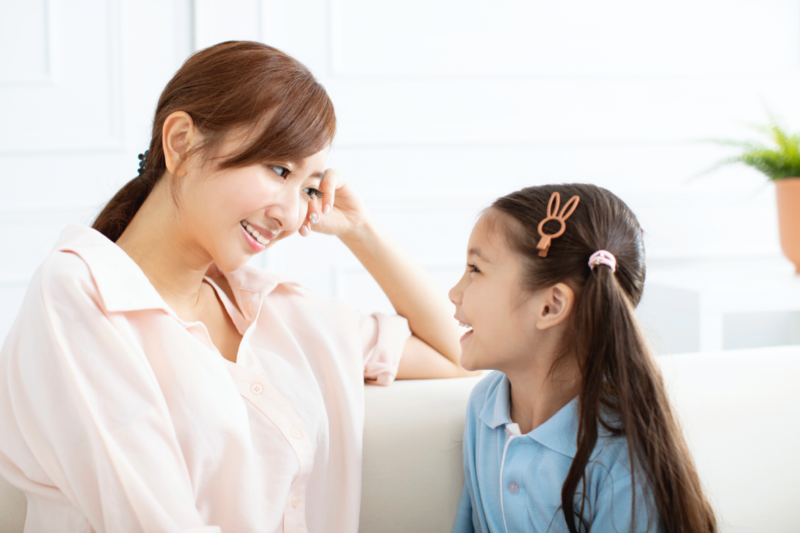Most Sex Ed Stresses Abstinence. Here’s How Parents Can Fill in the Gaps.
If you wait around to have a single, awkward “sex talk” with your kids as they’re approaching their late teens, you’ve waited too long.

For more sex education resources, check out our Better Sex Ed guide.
“So what’s going on with your vagina?” is a question my 6-year-old daughter casually asked recently as she strolled into my home office.
I did a double-take, but it was quick. After all, I write about sex for a living and, well, sometimes, vaginas just … come up.
“Oh, nothing. My vagina is fine,” I said, just as casually.Most Sex Ed in Schools Stress Abstinence. Here’s How Parents Can Fill in the Gaps.
“OK,” she said and wandered off.
I am tickled by the fact that my daughter is just as comfortable asking me about my “vagina problems” as she is about the mole near my left shoulder or the burn scar on my forearm.
Then again, that learned ease was intentional on my part. From the beginning of her life, I’ve gobbled up books about approaching sexuality with my kid. I learned that it was best to teach her the names for her vagina and her vulva right alongside the names for her elbows and toes. I read her books about bodies and babies. I didn’t know if I was doing it right—what parent truly does?—but I tried to give her basic lessons in consent and boundaries. The lessons on boundaries are still a work in progress, but at least she no longer barges in on me while I’m peeing.
I am heartened when I hear that professional sexuality educators can also struggle with these conversations. Just like them, I often feel like I’m making things up as I go along. Still, my attempts to build a foundation of body acceptance and healthy sexuality seem to be paying off. This fills me with all-out glee.
Despite copious amounts of research indicating that comprehensive sexuality education is more effective than abstinence-only education at reducing unplanned pregnancies and sexually transmitted infections (STIs), Americans remain sharply divided on how to best educate their kids about sex. On the one side are those who believe that the more information their child has, the better prepared they are to make decisions about their sexual health in the future. On the other side are those who believe that the best way to prevent unplanned pregnancies and the spread of STIs is to promote abstinence, full stop.
Supporters of abstinence-only curricula believe that giving kids too much information about sex—and how to have it safely—is tantamount to giving them permission. But when those kids face relational and sexual decision-making for which they’re unprepared, there are often negative consequences.
States and school districts across the country are divided on the issue, too, with some opting for abstinence-heavy curricula (Texas is weighing rewriting its abstinence-only curriculum, which would likely have huge implications for standards across the country), some opting for evidence-based curricula, and others opting not to mandate any form of sex education at all. This leaves many students at a disadvantage, particularly LGBTQ teens and teens from other marginalized populations who continue to be underrepresented and even stigmatized in many sex ed curricula.
We can and should continue to advocate for more progressive sex ed legislation. But no matter what the state of sex ed in your school district, these lessons can occur in the home, too.
And ideally, they should start at a very young age.
Sexuality educator Elizabeth Schroeder once shared a great metaphor with me. She told me that her son was learning algebra now that he was an eighth-grader. But “it’s not the first time he’s learning math,” she said. First, he had to learn all those other basic building blocks of math, which in turn created a foundation that enabled him to understand algebra.
Sexuality works the same way. The first few months out of the womb, babies immediately get to know their bodies, and we can help them with that by teaching them the proper names of their body parts. All of their body parts.
Around the age of 5, kids can start to grasp the concept of boundaries, and the difference between public and private behaviors. Soon after, they can start interrogating gender roles. After that, our kids are ready to learn about puberty, sexual and reproductive anatomy, and sexual orientation. Eventually, your average high school senior should have a firm infrastructure in place that readies them for more complex lessons, giving them the ability to make smart and healthy decisions around sexual and romantic relationships.
If you wait around to have a single, awkward “sex talk” with your kids as they’re approaching their late teens, you’ve waited too long. The “talk” needs to be an ongoing dialogue.
And sure, it might be awkward. Sure, it might be easier to shunt responsibility for those lessons onto schools. But we can’t trust that our school districts will give kids the information they need. Nor can we control where else our kids might go looking for answers. The internet? Porn? Their peers? All can be unreliable, which is why it’s so important that we take the helm and show our kids that it’s safe for them to use us as their primary sources of info.
How can we be the sorts of parents our kids come to with all their questions? I could go on for another 500 words (and, in fact, I taught a one-hour workshop on this). Sex ed advocacy organizations like Advocates for Youth also have great tips on how to be an “askable” parent.
But first and foremost, what you have to know is that kids just want their parents to treat them with respect and to approach sexual conversations as actual conversations. They want to be listened to and taken seriously.
And above all, it’s important to say something instead of nothing.
